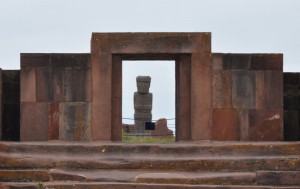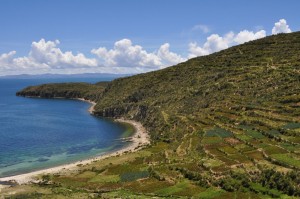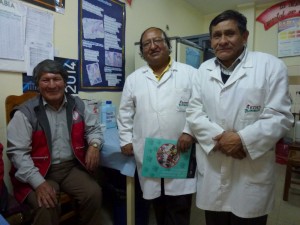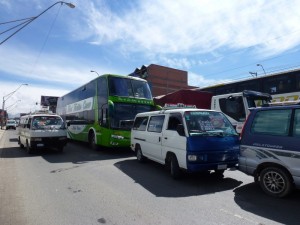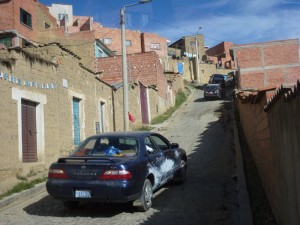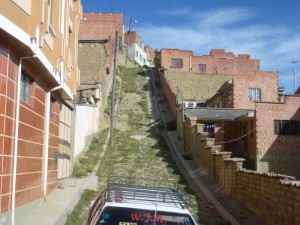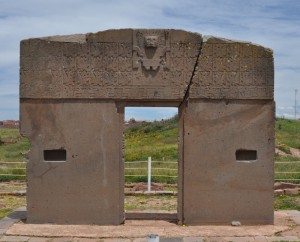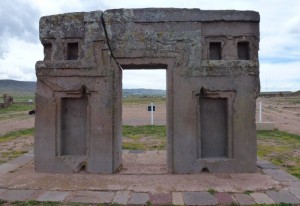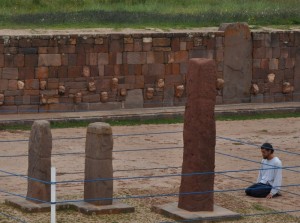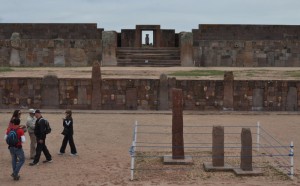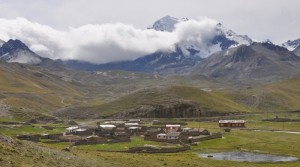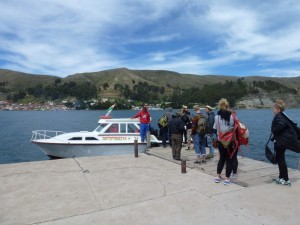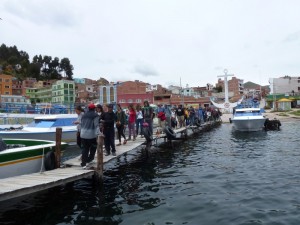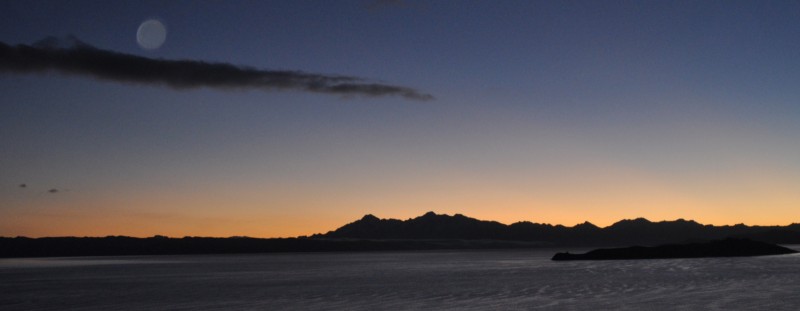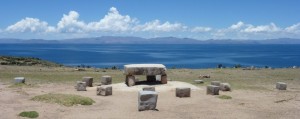La Paz, Tiwanaku & Lake Titicaca
February 22 – 27 Saturday-Thursday: La Paz
The bite by the dog had affected my travel plan and delayed my departure for Peru. Also the bite was deep and I dared not walk too much. I must rest so that I could be fit enough to do the Inca Trail on March 3.
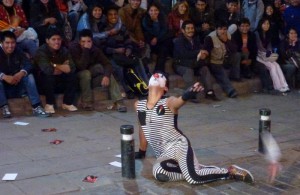 February 22 – I left Sorata for La Paz the first thing in the morning. I arrived at Hostal Naira around 1pm and was supposed to take my Spanish lesson at 3pm. Instead, I asked my teacher, Xiomara to accompany me to a clinic at Av 6 de Agosto recommended by a travel agent. This private clinic looks posh and modern. But the receptionist told us that we should go to the Asistencia Pública at Av. Camacho. We took a taxi and waited for less than 30 minutes before seeing a doctor at the emergency room.
February 22 – I left Sorata for La Paz the first thing in the morning. I arrived at Hostal Naira around 1pm and was supposed to take my Spanish lesson at 3pm. Instead, I asked my teacher, Xiomara to accompany me to a clinic at Av 6 de Agosto recommended by a travel agent. This private clinic looks posh and modern. But the receptionist told us that we should go to the Asistencia Pública at Av. Camacho. We took a taxi and waited for less than 30 minutes before seeing a doctor at the emergency room.
The doctor checked my wound and noted the incident. He cleaned the wound and told me to get two doses of antibiotics from a pharmacy and return for an injection. As the doctor in charge of vaccine was off at 2pm, I had to return the following day for vaccination which might last for seven days. I was really annoyed for the wrong information given to me in Sorata. All doctors practicing in Bolivia should know that according to the country’s protocol, anyone bitten by an unknown dog must take vaccination immediately. Had he given me this information, I would have rushed back to La Paz and had my first injection on February 21.
We went to a pharmacy nearby to get the antibiotic and returned to the emergency room. I had to pay B$3 injection fee. I can normally stand a fair amount of pain. But as soon as the nurse put the needle into my bottom, I yelled and tears poured out. I cannot describe what had happened. But it caused so much pain that I had to lie down for more than 20 minutes to relax my muscles. The doctor also came and then discovered that what he had prescribed was not exactly what the pharmacy had given me: one element was missing which might have caused the pain and the nurse had not read the content of the stuff we handed to her.
Xiomara went to the pharmacy while I was lying in the hospital bed. She demanded an explanation. What happened was that the pharmacy did not have exactly what the doctor had prescribed. So they gave us another type without telling us. What a mess! Both the pharmacy and the nurse at the emergency room were negligent. Their negligence could have caused one’s life! I had enough and was upset.I took Xiomara out for dinner. In the meantime, I emailed Geoffrey my cousin and Karen, a good friend (both are doctors) for advice. I also told Wai Leuk, my nephew who had also been bitten by a dog before. Both Geoffrey and Karen advised me to take the vaccine. I went to bed early and had a sound sleep. There is nothing I can do: I have to take one thing at a time and act in accordance with doctor’s advice.
February 23 – Accompanied by Xiomara, we went to see the doctor in charge of rabies vaccine. He looks competent and is sympathetic. Though the chance of having rabies might be slim, he would give me a 5-day vaccine programme. As I had the first injection today, I could not leave La Paz till Thursday. I was relieved as it would still give me enough time to arrive in Cuzco for my 4-day trek.
I had the second and last antibiotic injection. This time I had no pain at all. I took Xiomara for a drink and finishing off my last Spanish lesson at 11:15am. I am most grateful for her company when I was in distress. I might not have learnt much Spanish in the last two lessons but her presence and assistance are most appreciated.
February 24 – I joined a group tour to Tiwanaku for B$57. I was picked up around 8:30am but the tourist bus did not leave La Paz downtown till 9:30am after picking up 19 other passengers. But things were not right: there were policemen all over when we reached El Alto and traffic was not moving. It was another large scale protest where protestors blocked the main trunk routes. The driver tried to take side streets without success. After driving in vain for over two hours, he gave up and we returned to La Paz. I arrived at my hotel after 12:30pm and had a headache. I had a rest, went for my injection and did nothing for the day.
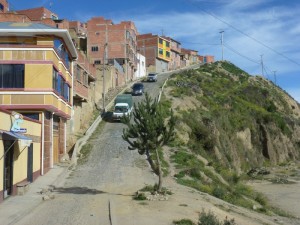 |
February 25 – I took the same tour with the same guide Leon and driver Pedro. We were heading up to El Alto at 8:15am (more than an hour earlier) and there was still a large presence of police. But this time, Pedro took another route (which takes at least 30 minutes more) and we managed to arrive at Tiwanaku around 11am.
Tiwanaku, a World Heritage Site, was the ritual and administrative capital of an empire once stretching into present-day Peru, Argentina and Chile. Tiwanaku is recognized by Andean scholars as one of the most important civilizations prior to the Inca Empire with a high level of achievements in technology, architecture, agriculture, hydraulics and astronomy. At the height of the empire, there were about 3 million inhabitants living the area around the present day Tiwanaku. Possibly owing to climatic changes, the once fertile land was no longer productive and the empire vanished. But as it had no written language, little seems to be known about this lost civilisation.
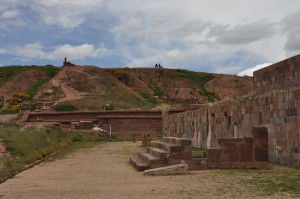 |
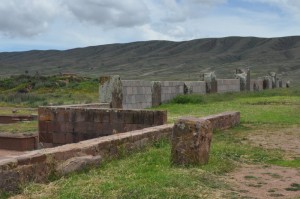 |
Leon took us to see two museums before visiting the archaeological site. The first one is almost empty: there is one massive 7.3m monolith. The Ceramic Museum has many ceramic items from Pre-ceramic Age to the Inca period. But the exhibits are in my view poorly displayed and the lighting is bad. As expected, there is no English explanation. Leon gave explanations in both English and Spanish. But I find his English difficult to follow and really do not get much out of his commentary.
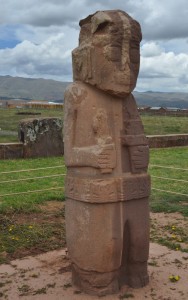 |
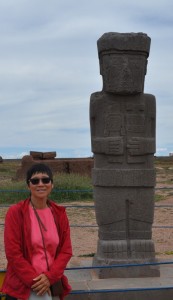 |
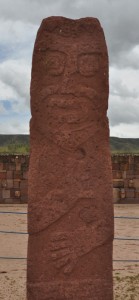 |
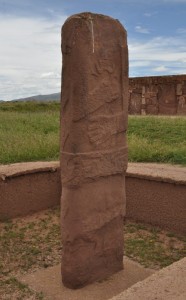 |
We followed Leon to visit the site where three gigantic temples once stood. They are known as Allapacha (the sky god), Akapacha (land god) and Makapacha (life after death god). As most of the stones had been taken by the Spanish to build churches and other buildings, nothing much remains on site. The only genuine items include a Sun Gate and a couple of monolith statues. Parts of the walls have been restored but the job is not well done.
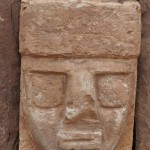 |
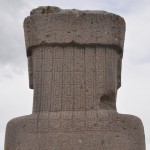 |
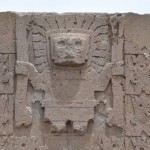 |
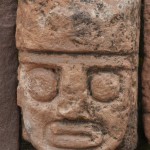 |
After a quick lunch, we made a stop at Puma Punka (Puma Door Temple) which has stones with remarkable cutting scattering all around the archaeological site. The traffic was good and I got back to La Paz around 3pm.
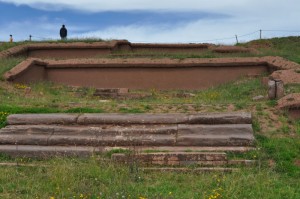 |
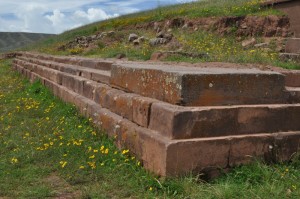 |
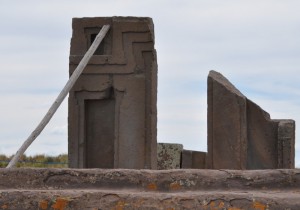 |
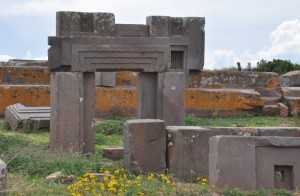 |
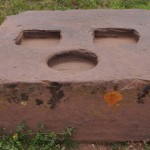 |
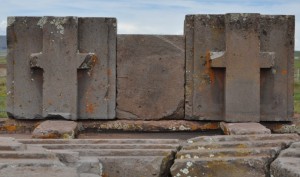 |
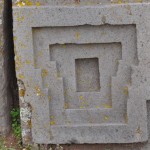 |
February 26 – I had a private trek to Chiarqhota Lake. To cut a long story short, I booked two trips with a trekking agency namely a 3-day El Choro trek and a 5-day trek. But as I had hurt my knees after the El Choro trek, I could not take the second trek on February 12 though I had already paid B$1500. According to the contract, I could only get a third of the amount paid back. After much discussions, the agent finally agreed to pay in kind and arrange a private trek worth B$800. (I hope to reclaim the remaining B$700 from the insurance company).
A car picked me up at 7:30am and I arrived at Tuni which is about two hours’ drive from La Paz. The traffic was smooth without blockade from protestors. The weather was fine and I had good views of the Cordilleras including Huanyna Potosi.
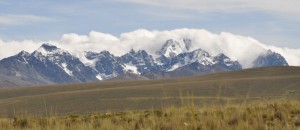 |
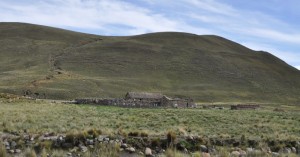 |
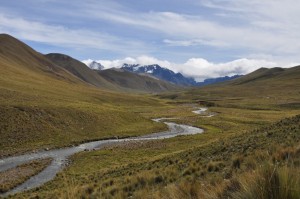 |
The agent told me the driver would be my guide. But he only dropped me off at the gate and told me to follow the path. I reached the Tuni reservoir which was built completed in 1977. As it became cloudy, I could no longer see Huanyna Potosi and other soaring peaks behind the reservoir. After walking around for two hours, I headed back to the car and got back to La Paz before 2:30pm. I did not find the Chiarqhota Lake which is said to be a green and beautiful lake. I was let down by the agent once again.
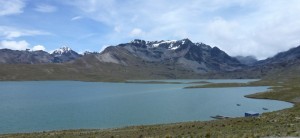 |
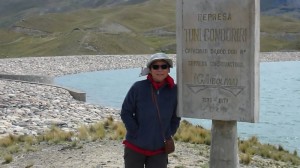 |
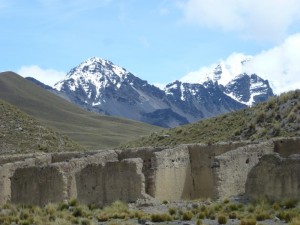 |
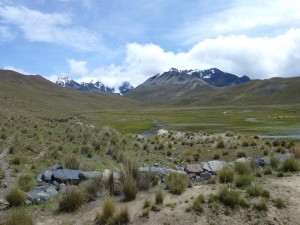 |
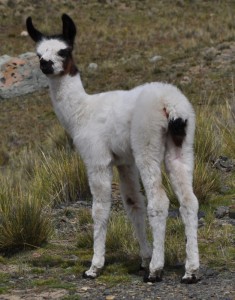 |
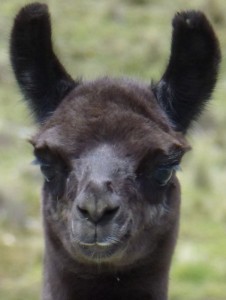 |
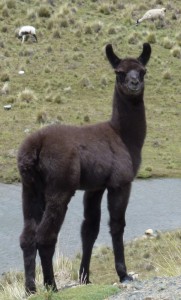 |
February 27-28 – Lake Titicaca & Isla de Sol
I booked a tour to Isla de Sol and the guide Malu is a Quechua. Phil, an Aussie was also on the tour. Malu picked me up from the hotel at 7:30am and accompanied me to the hospital for the last vaccine injection. We boarded the tourist bus near the hospital at 8:10am. By 8:15am I was finally leaving La Paz on my way to Lake Titicaca. What a relief!
I had been on Isla de Sol with Lillian in 1988 but could not recall anything apart from several unforgettable incidents. First when we arrived at the port, we had a long flight of steps to climb to the village Yumani at the top. We had to stop every five steps to catch our breath. Second, we stayed with a local family and could not find our way back to the mud hut in the dark after having dinner in the village. Third, it was the coldest night for both of us and we could not sleep.
This time, the road from La Paz to Copacabana is paved and took less than four hours. The boat trip from Copacabana to the island took another hour and a half. There are 36 islands in Lake Titicaca and Isla de Sol is the largest with an area of about 70 km² and a population of a few thousand.
Yumani is the largest village on the island with smaller settlement at Cha’llapampa and Cha’lla. Our eco lodge is about 20 minutes’ walk from the port near the southern tip of the island. The island has become more developed since my last visit with dozens of lodgers and hundred places for home-stay. But fortunately, it remains car-free!
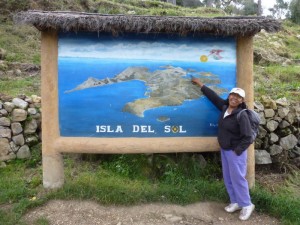 |
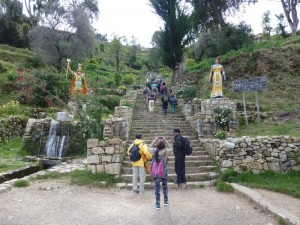 |
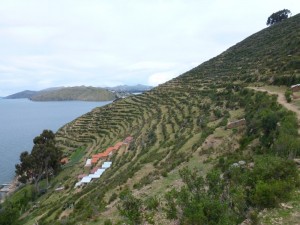 |
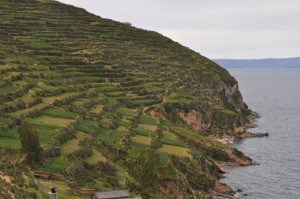 |
After a cup of tea, we set off for Pilko Karina (Sun Temple) which is the most sacred place on the island. It is small and most of the stone structures are original.
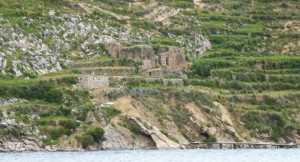 |
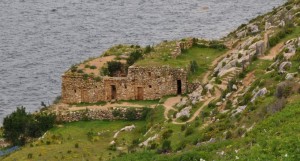 |
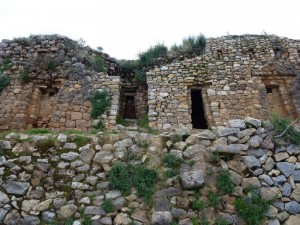 |
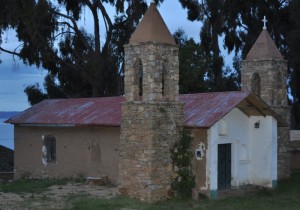 |
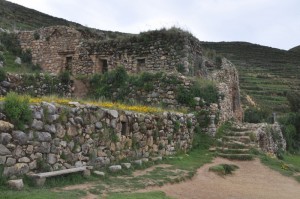 |
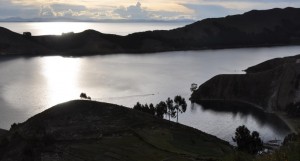 |
We walked to the village sports ground where celebration was going on. Ladies in their colourful costumes were sitting together drinking beer and chewing coco leaves. Men gathered around and drank beer. Some men were playing musical instruments while several couples were dancing. The atmosphere was jolly and festive. We returned to the lodge for dinner at 7:30pm.
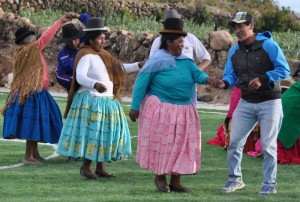 |
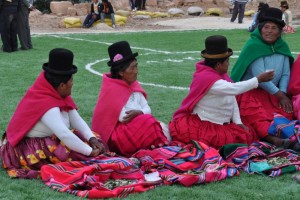 |
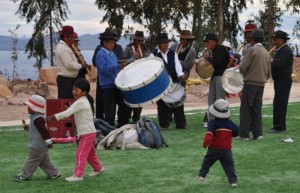 |
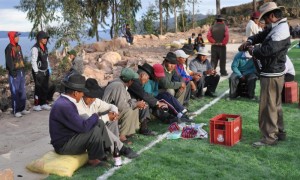 |
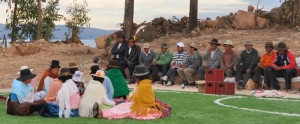 |
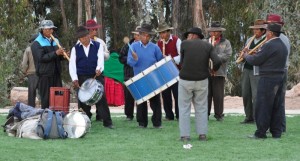 |
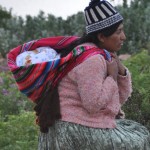 |
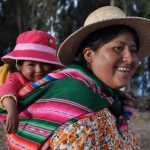 |
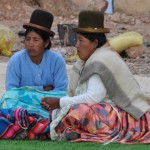 |
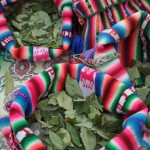 |
I got up at 6am the next morning to take a glimpse of sunrise. It was not as spectacular as I had thought. The mountains were too far away. At 8:15am I set off with my backpack on my bag on a 12-km long walk from the southern end of the island to the Chincana ruins at the northern tip of the island.
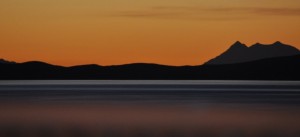 |
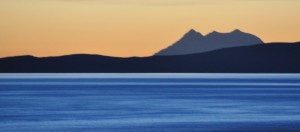 |
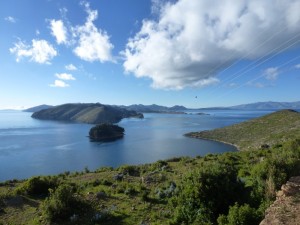 |
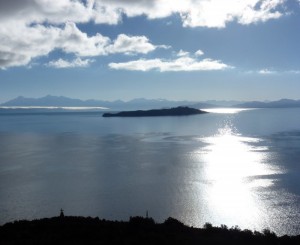 |
We had to reach Cha’llapama before 1:30pm to catch a ferry. The walk is not too difficult as we started at the higher end of the island. The scenery is spectacular with views of the mountain ranges on both the Peruvian and Bolivian sides and the expansive azul lake! There are numerous picturesque bays and inlets and plots of cultivated land form beautiful patchworks. While I was walking, I realized it would be too much to carry my backpack for the Machu Picchu trek and I had to get a porter.
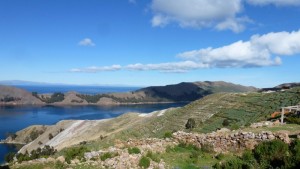 |
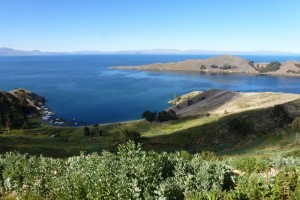 |
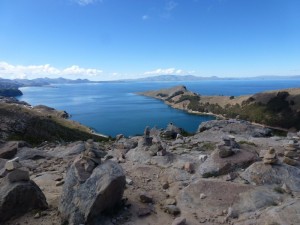 |
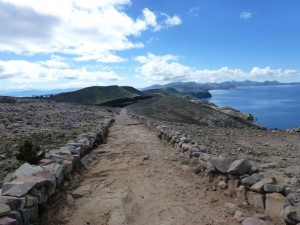 |
The day was gorgeous with a blue sky, little wind and warming sun. I finished the walk without problem despite the wound from the dog bite (which was still hurting). I used my walking poles to support my right knee which still caused me pain from time to time.
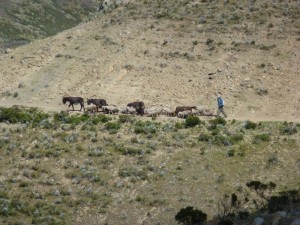 |
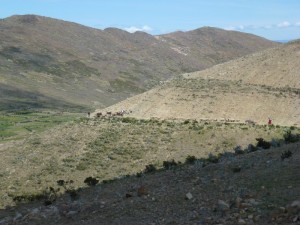 |
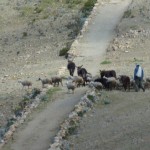 |
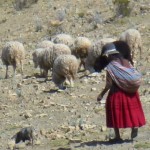 |
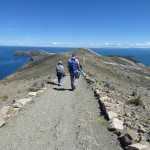 |
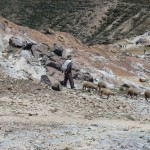 |
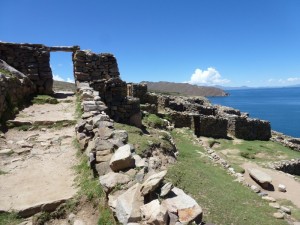 |
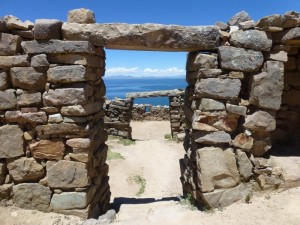 |
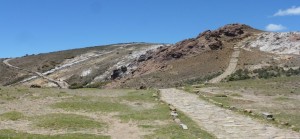 |
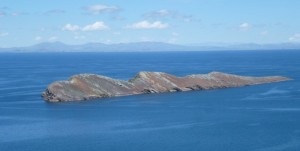 |
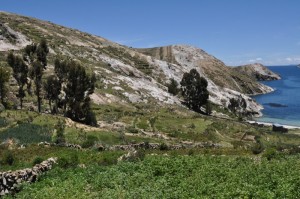 |
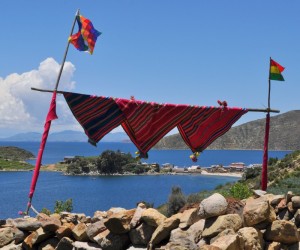 |
I had a great day and got back to Copacabana at 5pm and had an enormous and excellent Copacabana ice-cream for B$30 before taking the bus to Cuzco, Peru at 6:30pm. The bus only took five minutes to reach the border.
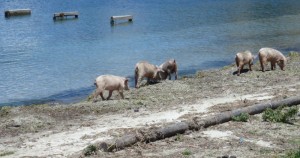 |
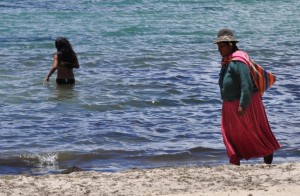 |
The immigration control staff whisked me off as they discovered I had overstayed! When I looked at immigration control in Bolivia before leaving Hong Kong, I understood I could stay visa-free for 60 days. But what happened was that as I entered from the land border from Brazil, I only had 30 days. I have been careless and should have looked at the stamp and take note of the period of stay given to me. The immigration staff were polite and told me to pay B$20 for each day of overstaying. After paying B$280, I was allowed to leave! This is the first time ever I had such a problem! I was glad to be able to leave Bolivia without hassles. I was in Peru shortly after 7pm.
Remarks – My 2-month in Brazil and Bolivia (to add)


